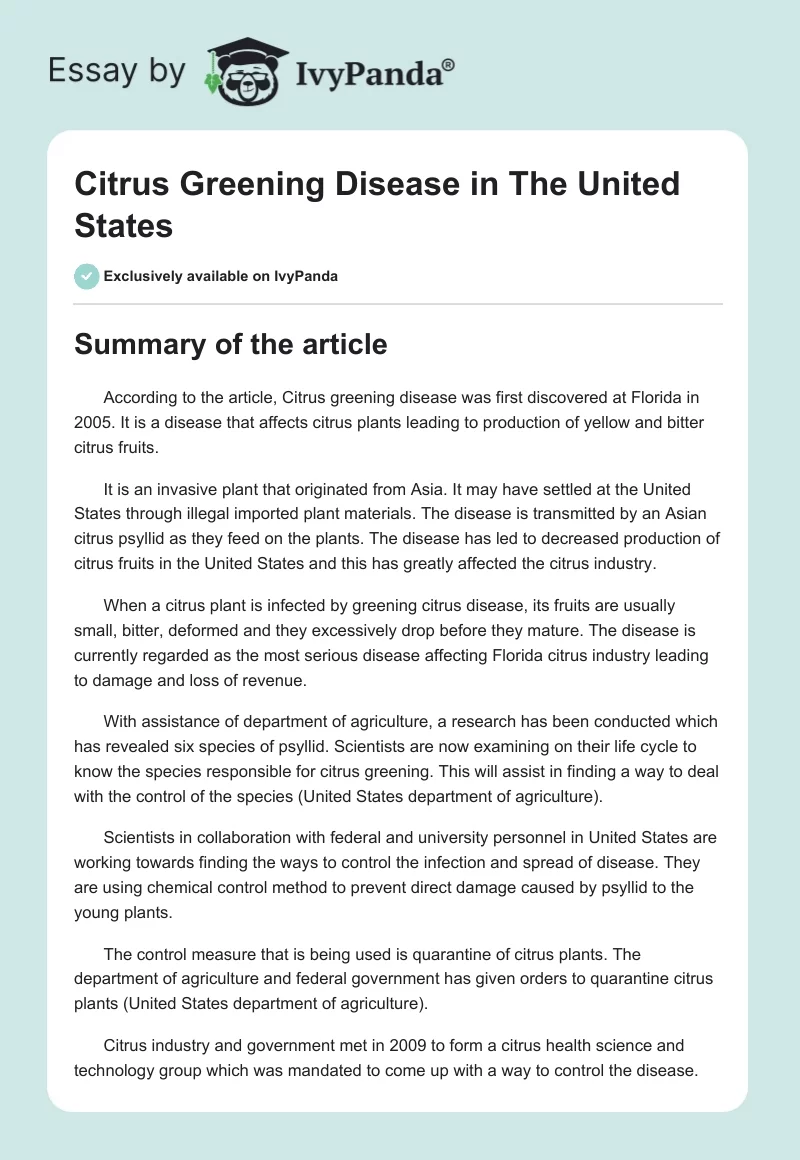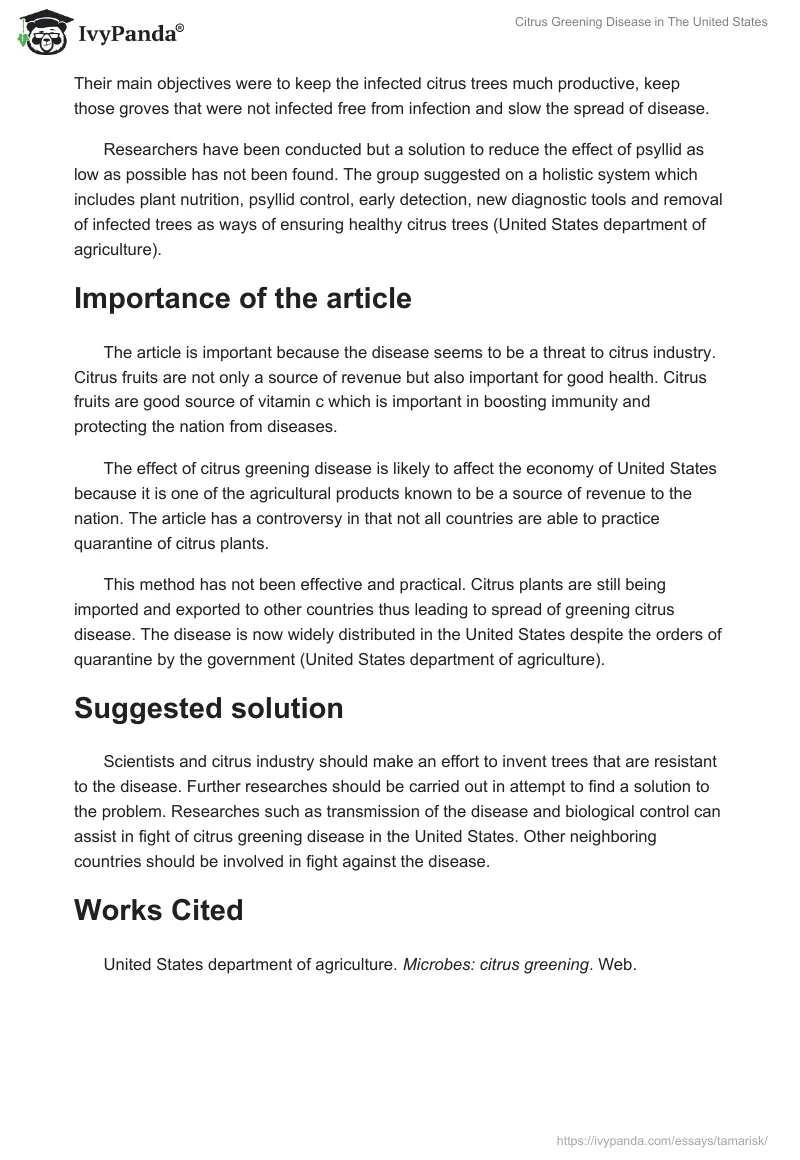Summary of the article
According to the article, Citrus greening disease was first discovered at Florida in 2005. It is a disease that affects citrus plants leading to production of yellow and bitter citrus fruits.
It is an invasive plant that originated from Asia. It may have settled at the United States through illegal imported plant materials. The disease is transmitted by an Asian citrus psyllid as they feed on the plants. The disease has led to decreased production of citrus fruits in the United States and this has greatly affected the citrus industry.
When a citrus plant is infected by greening citrus disease, its fruits are usually small, bitter, deformed and they excessively drop before they mature. The disease is currently regarded as the most serious disease affecting Florida citrus industry leading to damage and loss of revenue.
With assistance of department of agriculture, a research has been conducted which has revealed six species of psyllid. Scientists are now examining on their life cycle to know the species responsible for citrus greening. This will assist in finding a way to deal with the control of the species (United States department of agriculture).
Scientists in collaboration with federal and university personnel in United States are working towards finding the ways to control the infection and spread of disease. They are using chemical control method to prevent direct damage caused by psyllid to the young plants.
The control measure that is being used is quarantine of citrus plants. The department of agriculture and federal government has given orders to quarantine citrus plants (United States department of agriculture).
Citrus industry and government met in 2009 to form a citrus health science and technology group which was mandated to come up with a way to control the disease. Their main objectives were to keep the infected citrus trees much productive, keep those groves that were not infected free from infection and slow the spread of disease.
Researchers have been conducted but a solution to reduce the effect of psyllid as low as possible has not been found. The group suggested on a holistic system which includes plant nutrition, psyllid control, early detection, new diagnostic tools and removal of infected trees as ways of ensuring healthy citrus trees (United States department of agriculture).
Importance of the article
The article is important because the disease seems to be a threat to citrus industry. Citrus fruits are not only a source of revenue but also important for good health. Citrus fruits are good source of vitamin c which is important in boosting immunity and protecting the nation from diseases.
The effect of citrus greening disease is likely to affect the economy of United States because it is one of the agricultural products known to be a source of revenue to the nation. The article has a controversy in that not all countries are able to practice quarantine of citrus plants.
This method has not been effective and practical. Citrus plants are still being imported and exported to other countries thus leading to spread of greening citrus disease. The disease is now widely distributed in the United States despite the orders of quarantine by the government (United States department of agriculture).
Suggested solution
Scientists and citrus industry should make an effort to invent trees that are resistant to the disease. Further researches should be carried out in attempt to find a solution to the problem. Researches such as transmission of the disease and biological control can assist in fight of citrus greening disease in the United States. Other neighboring countries should be involved in fight against the disease.
Works Cited
United States department of agriculture. Microbes: citrus greening. Web.


